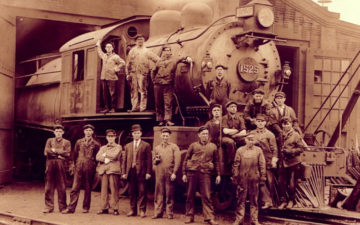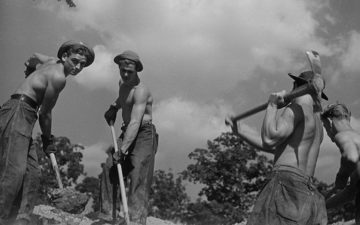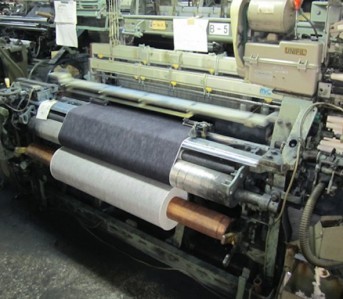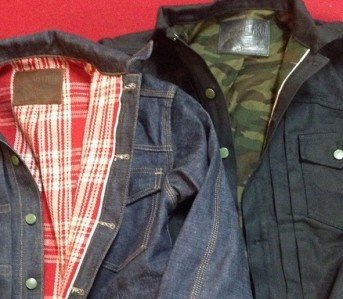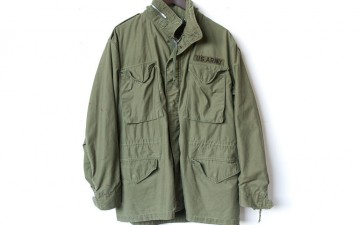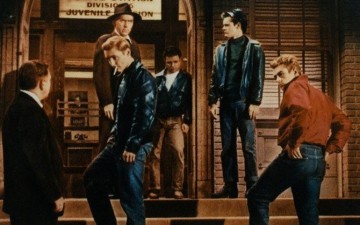Originally created for the US Army in Korean War but brought to the mainstream by mod culture in the 1950s and 60s, the fishtail parka is one piece of outerwear with many uses. Of course as a rain jacket, but the various iterations of the fishtail parka also work equally well as a city coat over a suit or in the wilderness on a hike.
With more than one iteration of the fishtail parka, there’s more to this longline military jacket than you might think. Here’s our attempt to dig a little deeper at the origins and the history behind the silhouette itself.
Origins of the Fishtail – EX-48 & M-48
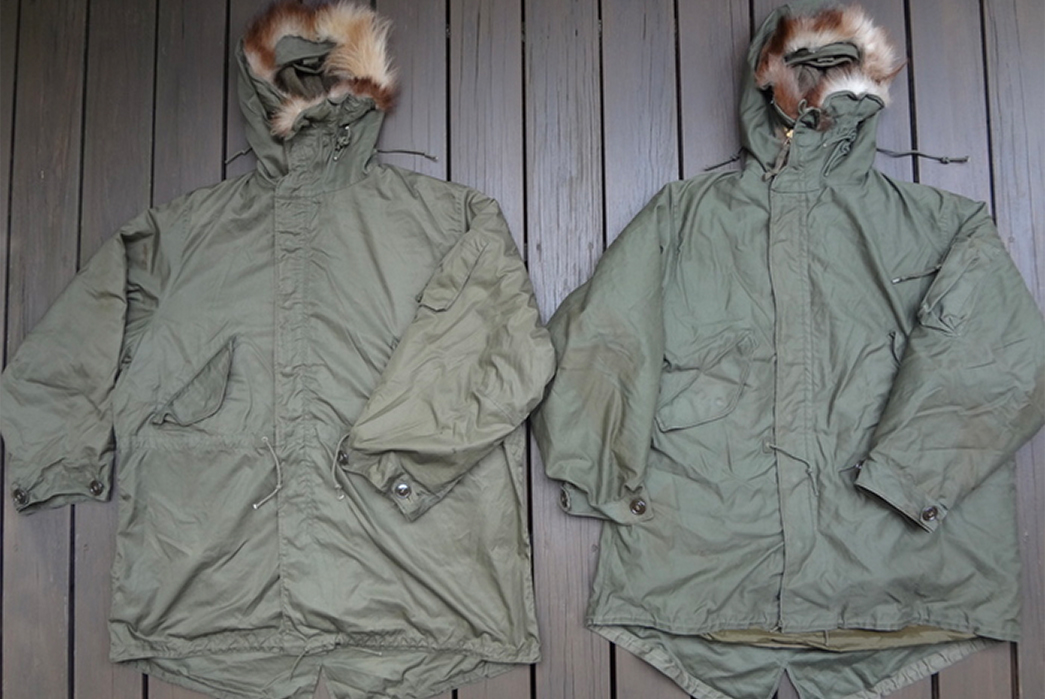
EX-48 Parka (left) vs. M-48 Parka (right) ia Parkashell.
The fishtail story starts in 1948 when the U.S. Army began experimenting with longline, fishtailed parkas. The key target for the U.S. military was to keep the soldiers warm and nimble without wearing a thick and clumsy piece of outwear. The fishtail parka accomplished these needs with a wide-fitting, three-quarter length, so it could keep someone’s entire body warm without hindering their movement.
The Ex-48 was the prototype for fishtails to come. It was made from a cotton poplin fabric and featured:
- The first fishtail hem
- A pocket on the left sleeve
- Wolf/coyote/wolverine trim on the hood
- Thin, fiberglass liner
- Storm cords at the waist to cinch it in
- Adjustable cuffs
- Placket cover to prevent zip rusting
- Flap pockets at the waist
- Roomy, oversized fit designed to be worn over battle dress
Although never issued, the EX-48 formed the schematics for the M-48 parka and other military fishtails to come. The only changes made on the M-48 from the Ex-48 were to the liner fabric — which was swapped for a heavier, warmer wool flannel —and the shell fabric, where a heavyweight cotton sateen was chosen.
While the M-48 was certainly warm and full of utility, it was costly to produce — a fiscal issue that meant the parka was only issued for one year. The Korean War was around the corner and the cold, wet climes of the Korean peninsula required a warmer parka for the droves of American troops being sent to the Far East.
M-51

An original M-51 with liner, via Rockhopper Vintage.
Nine months after the Korean War started, the US Air Force issued the first jacket in the fishtail story – the M-51 Parka.
A different silhouette to the M-51 Field Jacket issued to the Army, the M-51 was a long line, 3-piece fishtailed parka, updated from the aforementioned M-48. Made from a densely woven cotton sateen, the M-51 featured detachable hood and body liners – with the hood liner made from wool flannel with animal fur trim, and the body liner made from alpaca wool pile. Later M-51s were made from cotton poplin instead of sateen, and the body liners were changed to a ‘mohair freeze’ wool that didn’t absorb as much water.
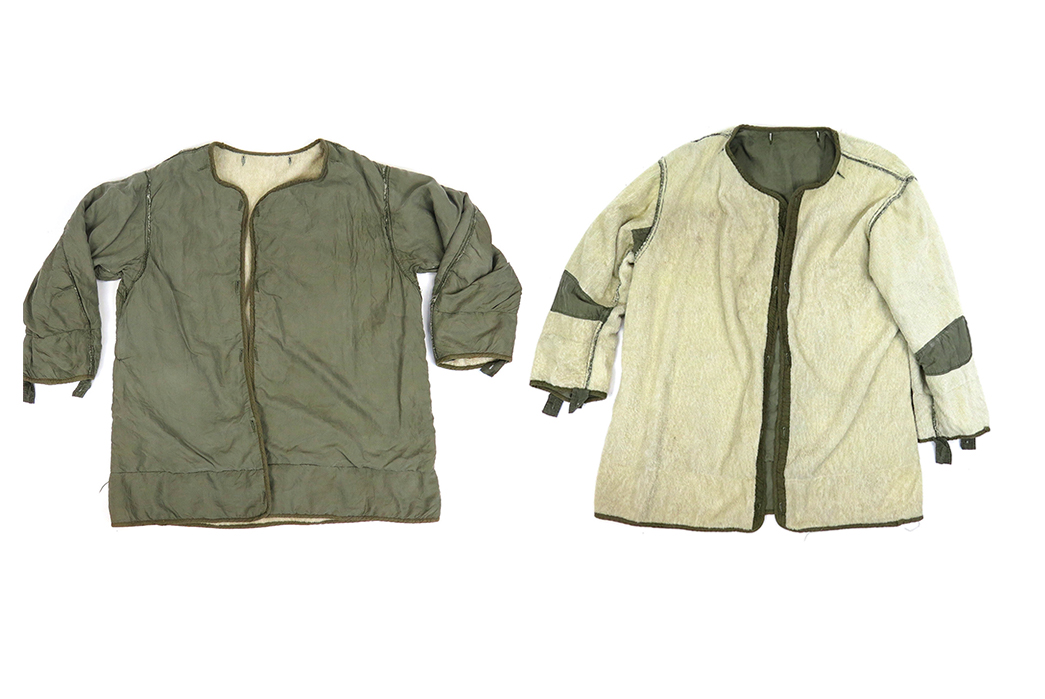
An M-51 Liner via Hessen Antiques.
The M-51 was mass-produced until 1956, with some smaller runs being produced in post-war Germany in the early 60s. German-made examples can be identified as the liners say ‘Mohair Frieze’ on the label, rather than ‘Mohair Freeze’.
M-65 Fishtail
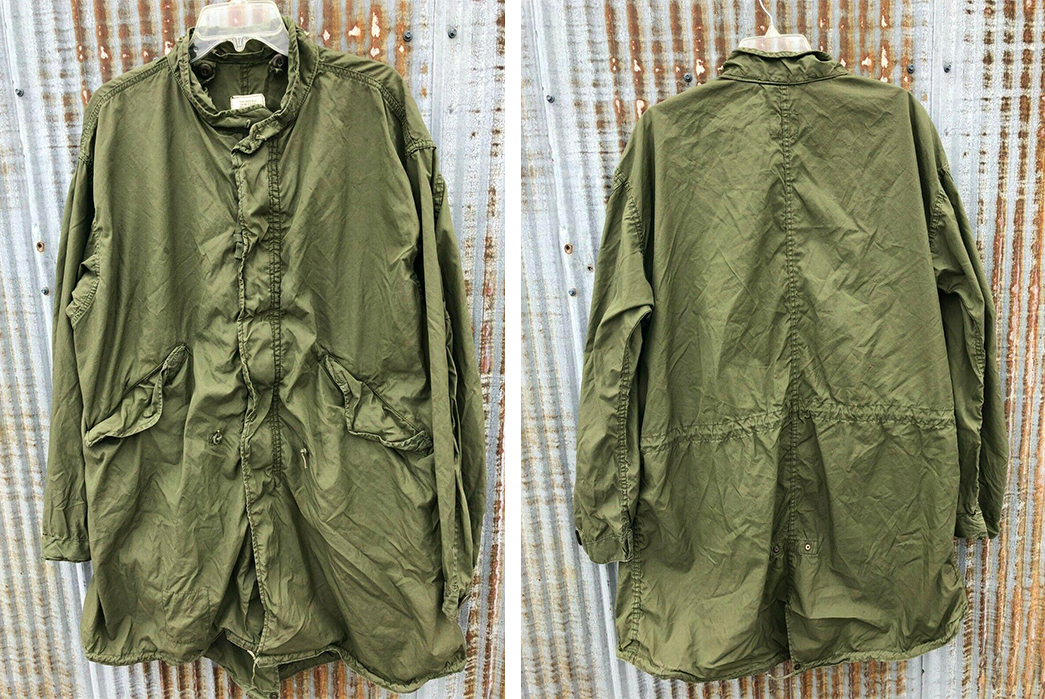
A circa late-1960s M-65 Fishtail via Worthpoint. Note there is tape on the chest. This example is sans-hood like most that turn up these days.
We all know the M-65 as the most iconic field jacket (are you talking to me?), but the M-65 has a fishtail brother. A brother in name only, however, as the silhouette is entirely different. ’65 refers only to the year of its design, of course.
First produced in 1968, the M-65 fishtail parka was the last revision on the fishtail style, with its main difference being the detachable hood and stand collar. Vintage examples rarely come with their original hood, therefore you typically see M-65 fishtails with just the stand collar, which is still a great look. The original hoods swapped animal fur for synthetic fur, with some rare early 70s contracts returning to real animal fur. Later 70s contracts also added a name tape to the chest and removed the word ‘M-65’ from the label and replaced it with ‘PARKA, EXTREME COLD WEATHER’.
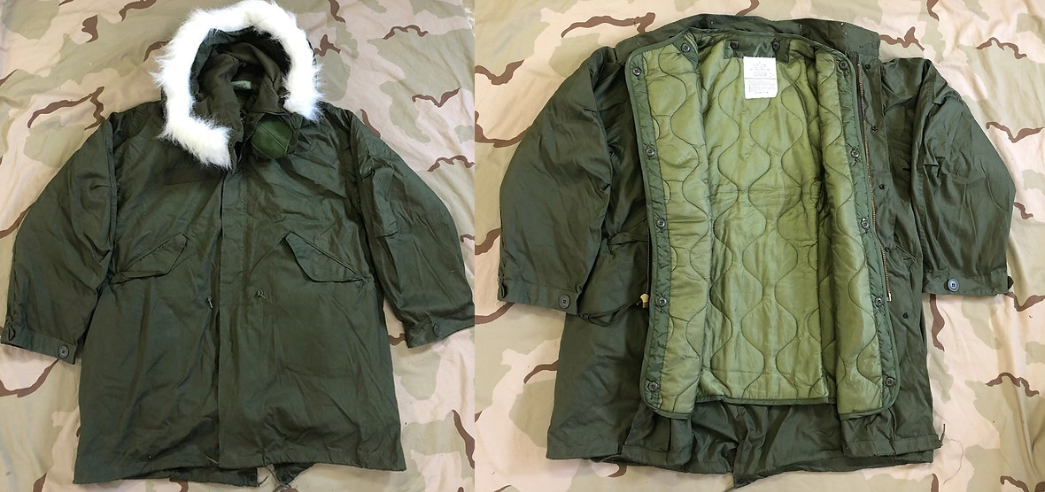
A 1970s-80s example of a Fishtail M-65. Name tape included. This example has its hood complete with synthetic fur trim, as well as a liner. Image via Army Navy Warehouse.
The shell of the M-65 fishtail was also updated, swapping cotton sateen for a 65/35 cotton/nylon blend. Fishtail M-65s also included a quilted liner made of lightweight nylon filled with polyester batting. This is the type of liner that has been reproduced and riffed on by a multitude of fashion houses after it came into fashion as a singular outer layer. This is likely due to heaps of liners turning up alone in vintage stores and being styled as a jacket rather than a utilitarian liner.
Civilian Adoption

Mainstream love for the fishtail, however, came about not in Korea or the United States, but in the UK. In the late 1950s and early 60s the Mod subculture had taken London by storm. A large portion of British teens suddenly loved Vespas, slim cut suits, modern jazz music, and fishtail parkas.
The fishtail parka started as a cheap piece of military surplus that could keep dust off of a Mod’s suit while he was on a scooter, but the fishtail soon became an essential part of the look itself.
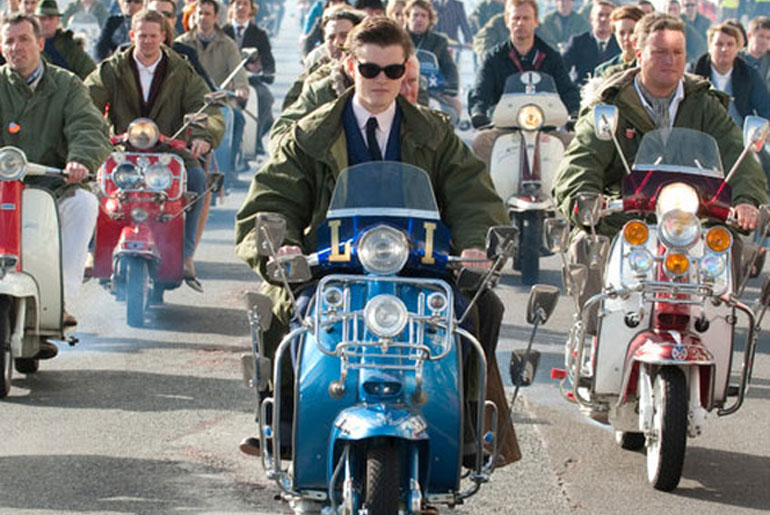
As Mods danced their nights away on amphetamines, love for the parka itself began to grow beyond the subculture and into the mainstream. Like the M-65 after the Vietnam War, the fishtail soon became just another piece of casual clothing.
Modern Makers
orSlow – M-65 Fish Tail Coat
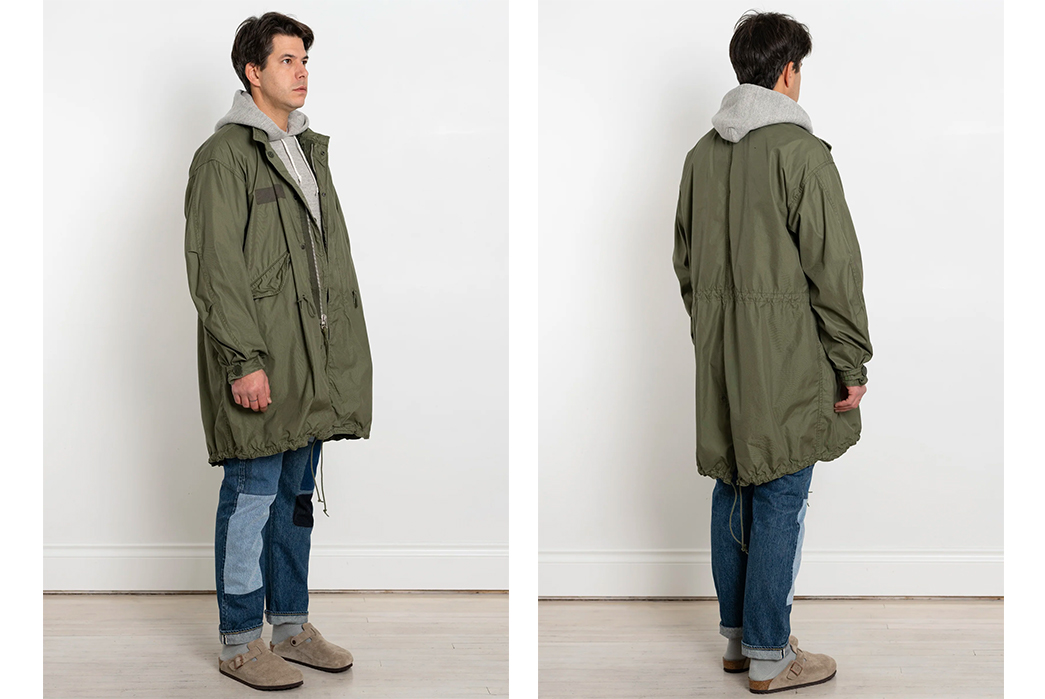
Available from Calculus for $710.
Iron Heart 38-OLV – M-51 FIELD COAT – 5 oz. Shell & Quilted Liner Olive
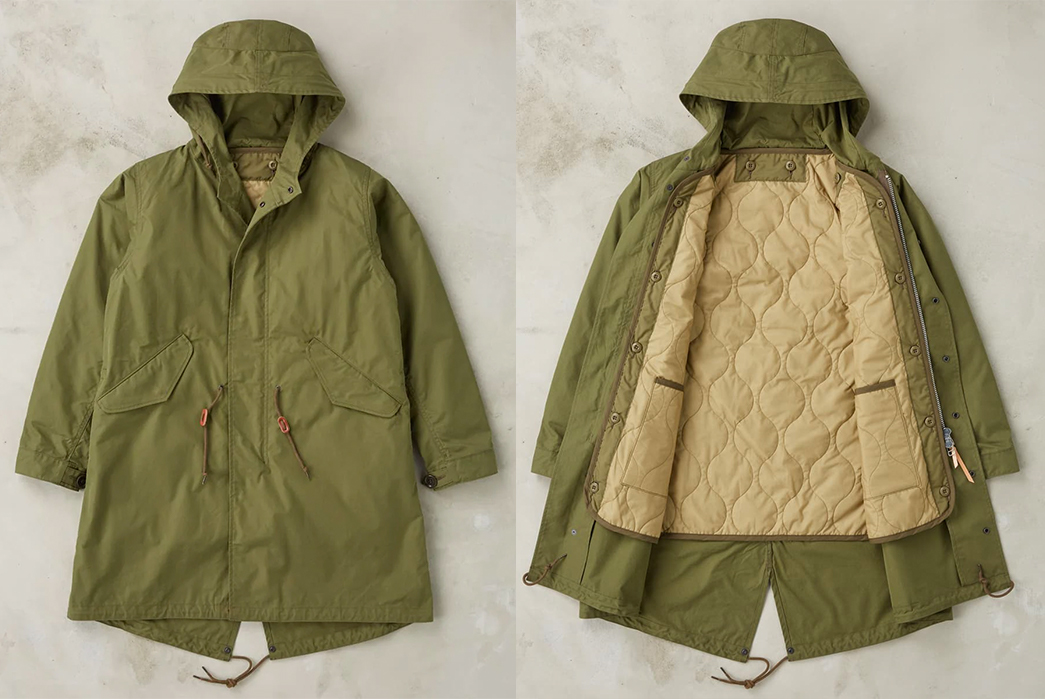
Available for $850 from Division Road.
Buzz Rickson’s – M-65 No Hood BR14719

Available for $390 from HINOYA.
Buzz Rickson’s M-51 Parka BR12266
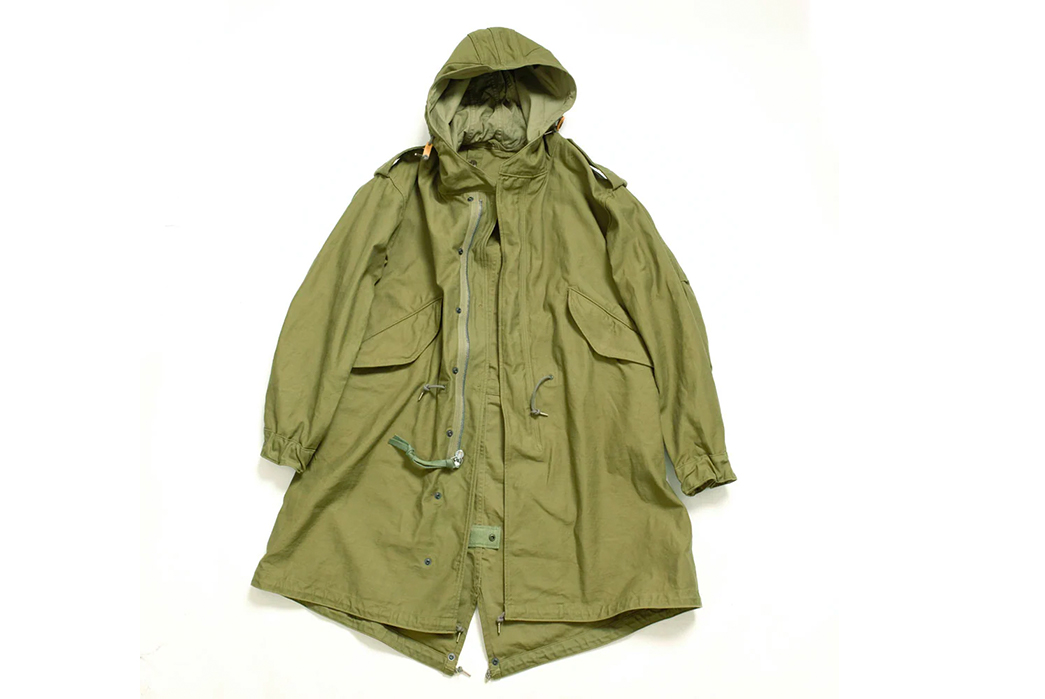
Available for $390 from HINOYA.
3sixteen Fishtail Parka – Moss Nylon
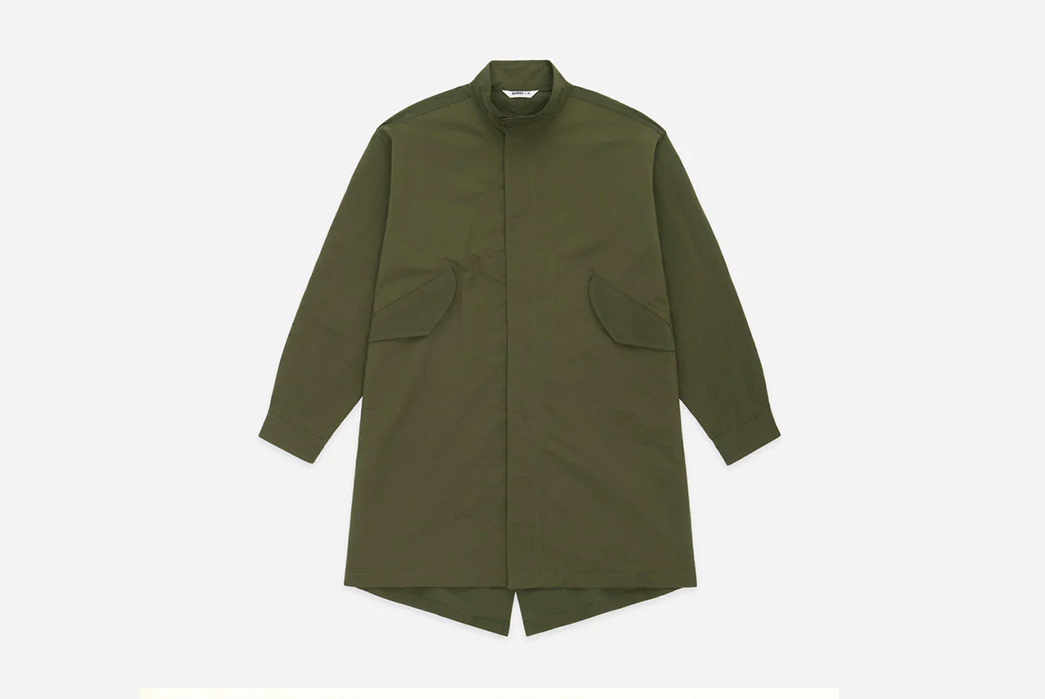
Available for $275 from Iron Shop Provisions.


